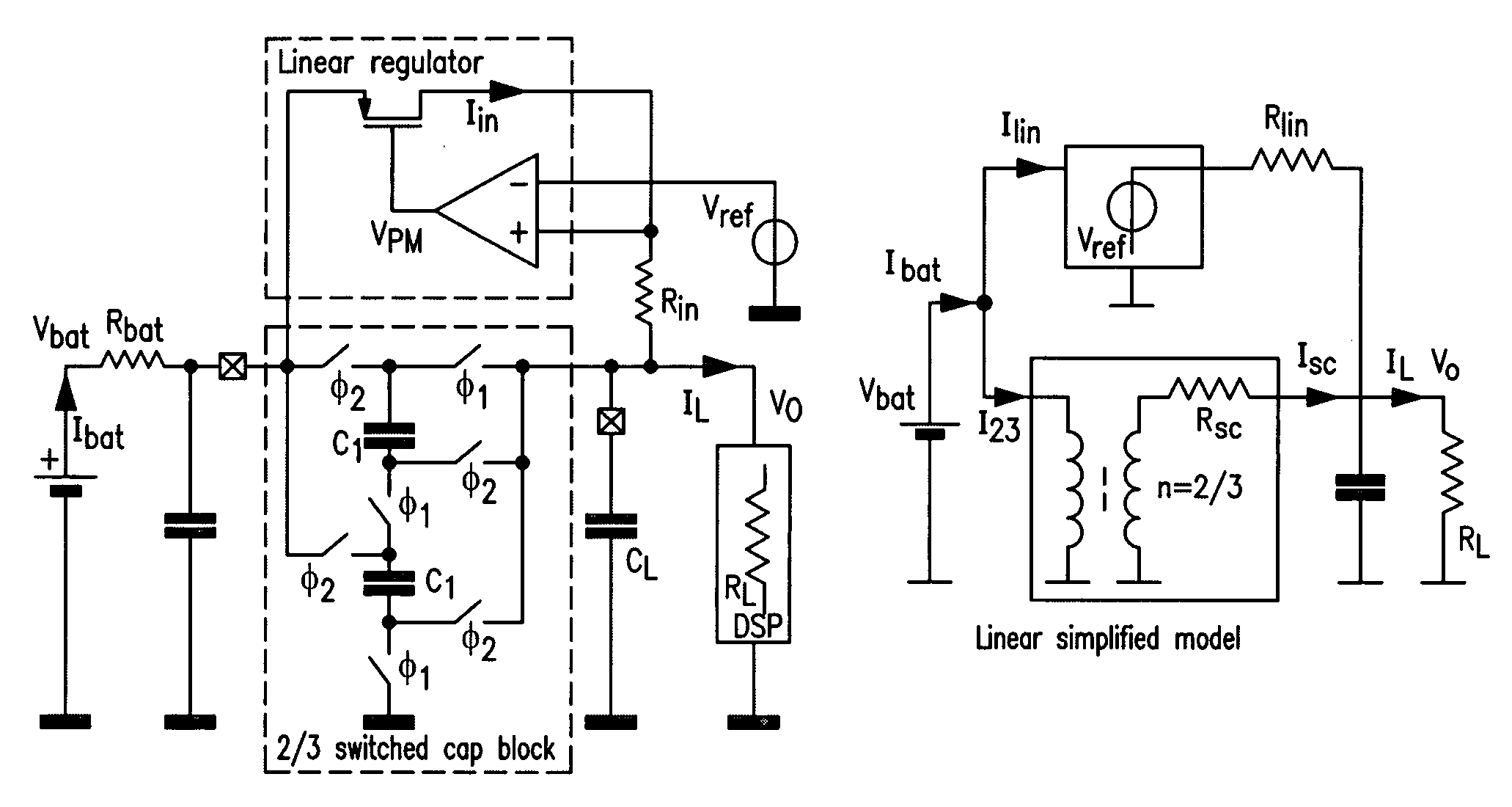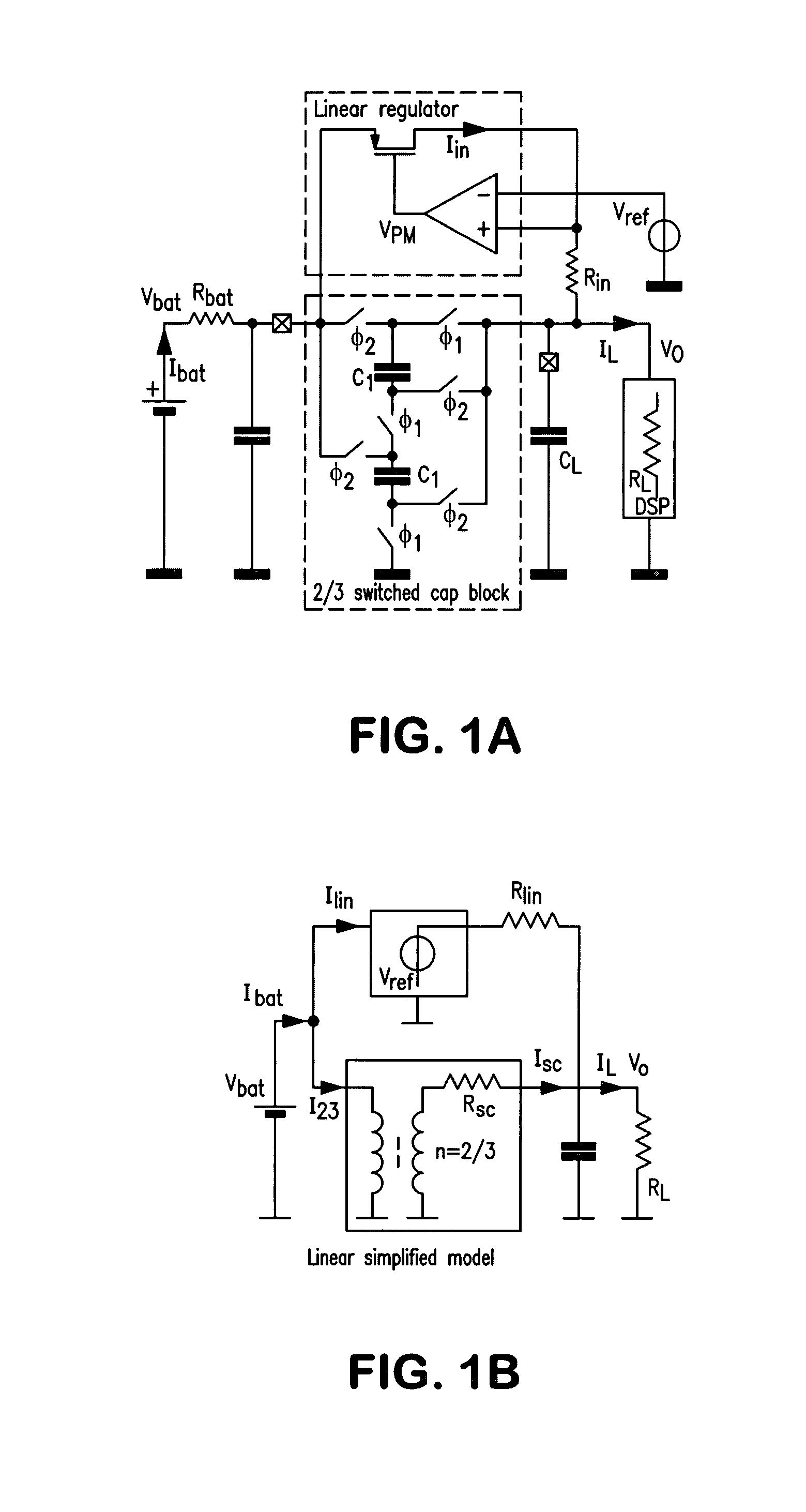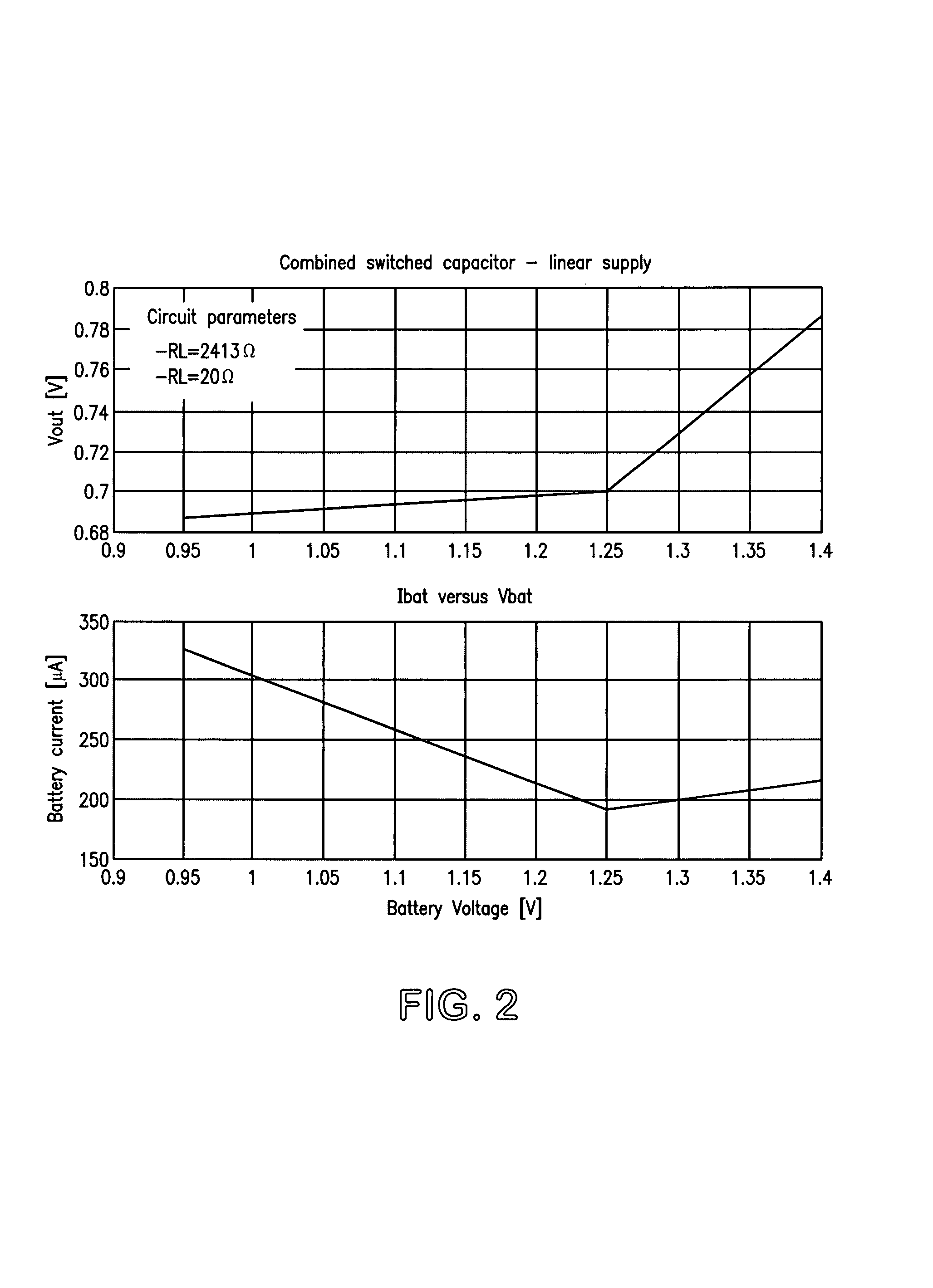Power supply arrangement for battery powered device
a battery-powered device and power supply technology, applied in the direction of ac-dc conversion, transmission, electric variable regulation, etc., can solve the problems of size problems, stability problems, magnetic interference, etc., and achieve the effect of optimizing the system efficiency
- Summary
- Abstract
- Description
- Claims
- Application Information
AI Technical Summary
Benefits of technology
Problems solved by technology
Method used
Image
Examples
Embodiment Construction
[0021]It should be appreciated that the system in principle can be adapted to any input and output voltages and still have the same advantages as in the specific example. The example shown is related to a battery powered headworn communication device, and more specifically to a hearing aid or a headset.
[0022]The SC step down converter provides a power efficient conversion of the battery voltage by a factor of e.g. ⅔while the linear regulator ensures operation of the digital supply at low battery voltages. This technique as explained in the following allows significant saving of battery current compared to a supply based on a pure linear regulator.
[0023]The (high) battery voltage should power efficiently be transformed to a pre-defined lower supply voltage, which can be provided by a SC step down converter. This SC-power converter can however not guarantee sufficient output voltage at a low battery supply. A combination of a linear and a switched capacitor supply is therefore propose...
PUM
 Login to View More
Login to View More Abstract
Description
Claims
Application Information
 Login to View More
Login to View More - R&D
- Intellectual Property
- Life Sciences
- Materials
- Tech Scout
- Unparalleled Data Quality
- Higher Quality Content
- 60% Fewer Hallucinations
Browse by: Latest US Patents, China's latest patents, Technical Efficacy Thesaurus, Application Domain, Technology Topic, Popular Technical Reports.
© 2025 PatSnap. All rights reserved.Legal|Privacy policy|Modern Slavery Act Transparency Statement|Sitemap|About US| Contact US: help@patsnap.com



